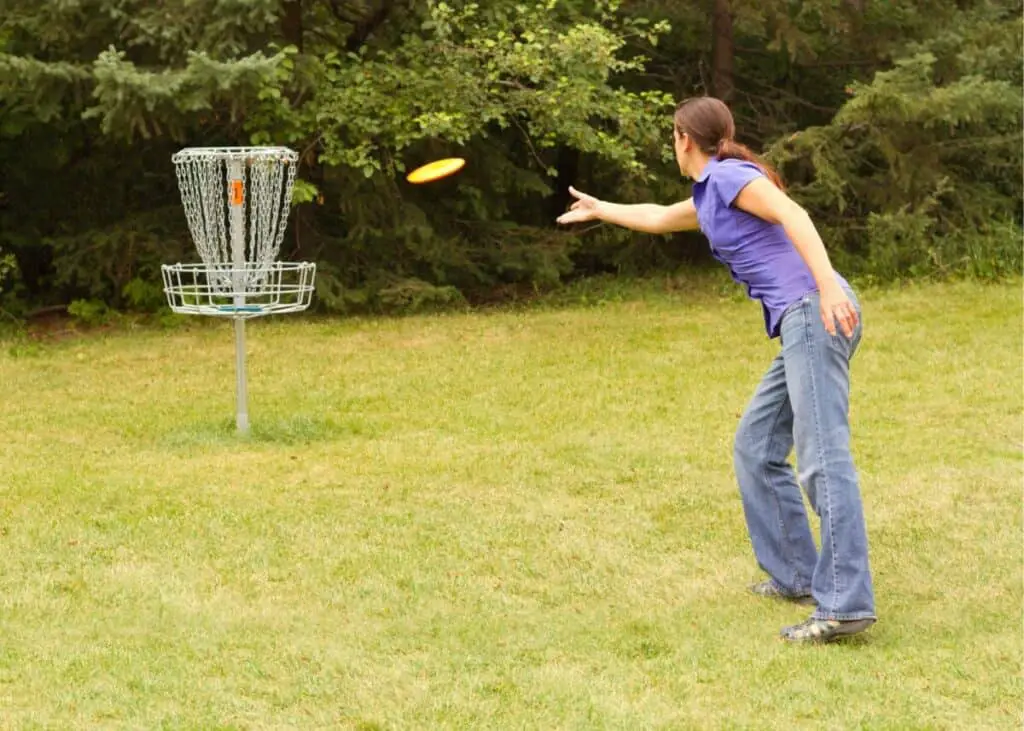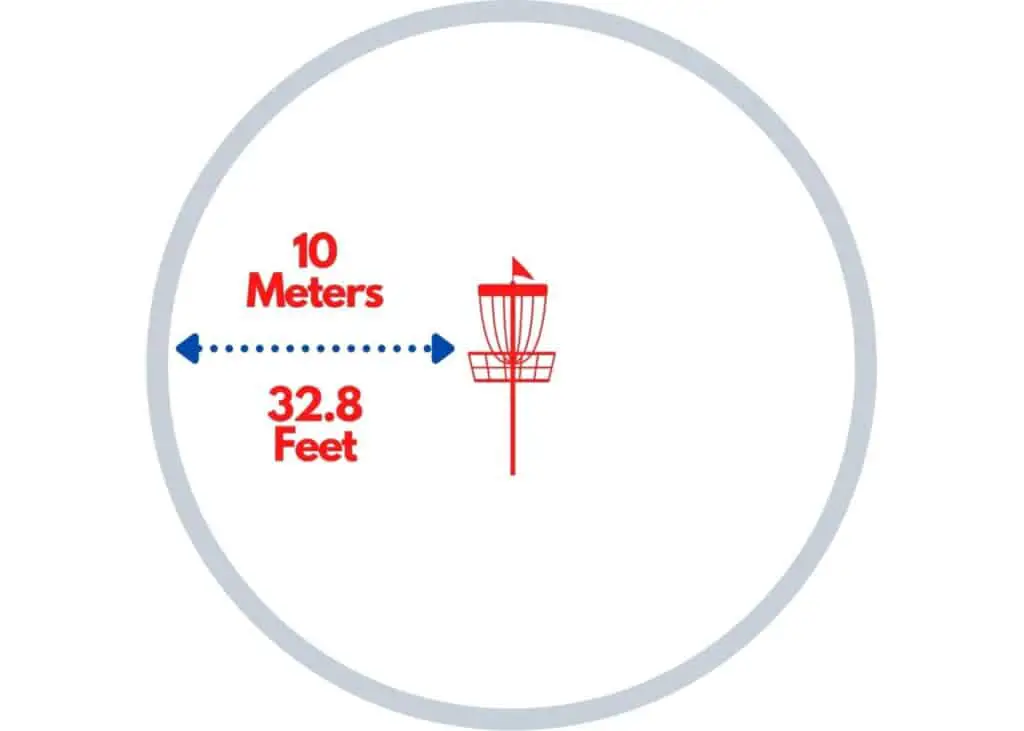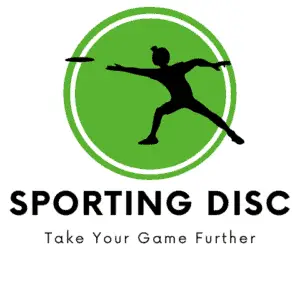Mastering the skill of putting in disc golf can be challenging to say the least. But, there are other rules to follow that you might not know about.
In disc golf, depending on how close you are to the basket, there are different rules to follow for putting. This is a circle that surrounds the basket, and if your disc is inside you’ll need to follow certain rules.
Table of Contents
Here is What the Circles Are in Disc Golf
The circle in disc golf surrounds the basket and designates the area for putting. Any space within 10 meters or 32.8 ft. of the basket is considered inside of the circle. In disc golf, a disc that lands inside the 10-meter circle will be considered a putt and subject to specific rules for putting.
In this post, I’ll describe what the circle is and how the rules change when throwing from inside the circle.

Why is There a Circle Around the Basket?
One reason that there is so much confusion and mystery around the circle concept is that on recreational and amateur courses this 10-meter circle area is rarely marked.
So, many beginner players and amateurs might not realize that there is a defined space that designates where a player must putt.
If there is not a circle marked on the course, it’s up to your group to define where exactly the circle is.

This is important because if your disc is inside of the circle, you’ll be bound to stance rules for putting that don’t apply to throws from the fairway.
To be clear, you can throw your putter from any place on the course that you want. But, when you’re inside the 10-meter circle, you’ll be bound by the rules set forth by the PDGA for putting.
Circle 1 Rules for Putting
Once you reach the circle for putting, foot fault or stance rules will change from the fairway throwing rules.
The PDGA rule 806.01 states its definition of the putting area as:
“Any throw made from within 10 meters of the target, as measured from the rear of the marker disc to the base of the target, is a putt.”
Then, the rule goes on to say:
“After having released a putt, the player must demonstrate full control of balance behind the marker disc before advancing toward the target. A player who fails to do so has committed a stance violation and receives one penalty throw.“
When you’re within the 10-meter boundary of the circle, no supporting point can touch in front of the lie until the player has “full control of balance behind the marker disc”.
This can be a little bit of a gray area when it comes to determining what is or isn’t a foot fault or stance violation.
Full control of balance is an important difference because throwing from the tee or the fairway, you’re able to step over the front of the lie after the disc has been released, regardless of whether you’ve established balance or not.
When putting, a player can only step in front of the lie after full control of balance has been established.
What this does is prevent a player from using a “falling putt”. A falling putt is when a player steps through the front of the lie as they putt.
It’s considered a falling putt even if the disc has been released and you have to use the area in front of the lie to gain balance.
How Many Circles Are There?
When it comes to sanctioned tournaments and the official rules set forth by the PDGA, the 10-meter circle around the basket that establishes the area for putting is all that matters.
But there is a second circle that is recognized by some players and observers of the game.
Circle 2
Circle 2 is a statistic created by Udisc and is used by players to track and identify longer putts that are outside of the circle 1 range. Players will often use circle 2 to track their long-range putts.
Circle 2 ranges from 10 meters to 20 meters from the basket and starts on the outer edge of circle 1.
Circle 1x
Circle 1x is another statistic created by Udisc to track putts from 3.3 meters to 10 meters that aren’t considered to be “gimmes” or tap-ins.
The circle 1x stat removes all of these very close tap-in putts that can skew putting stats.
How Does the Circle Affect a Jump Putt?
A jump putt is when a player jumps to create momentum for a putt that is outside of the 10-meter circle.
Jumping forward will cause you to cross the front of the lie. At this point, you wouldn’t have full control of balance before crossing the front of the lie.
The rules of putting from inside of the circle effectively take away the option of a jump putt because you have to demonstrate full control of balance before crossing the front of the lie.
When you’re throwing from outside the circle, even though you might still be putting, you can follow rules that apply to throwing from the fairway.
The rules for throwing from the fairway allow jumping over the front of the lie, as long as you have one supporting pointing contact with the lie when the disc is released.
Is a Step Putt Allowed Inside of Circle 1?
The concept of the step putt is similar to the jump putt, with the difference being that you’re stepping over the lie instead of jumping.
The step putt will use your body’s momentum for distance while maintaining accuracy when putting from further than 10 meters or 32.8 feet away from the basket.
So, step putting is not allowed inside of the circle because as the disc is released you’re stepping in front of your lie.
Remember, the rule within the circle for putting is that you have to have full control of balance before stepping in front of the lie.
A step putt is not considered to be full control of balance, since you’ll still be following through on the putt after stepping over the lie.
Final Thoughts | What Are the Circles in Disc Golf?
The putting rules within the circle can be confusing because not every disc golf course will have a visible 10-meter circle around the basket. In that case, you and your group will need to make a judgment call as to where the circle’s boundary is.
If you’re planning to play in any PDGA sanctioned tournament, the putting rules in the circle will be in effect, so it’s a good idea to be aware of the circle and use your practice rounds to get used to it.
